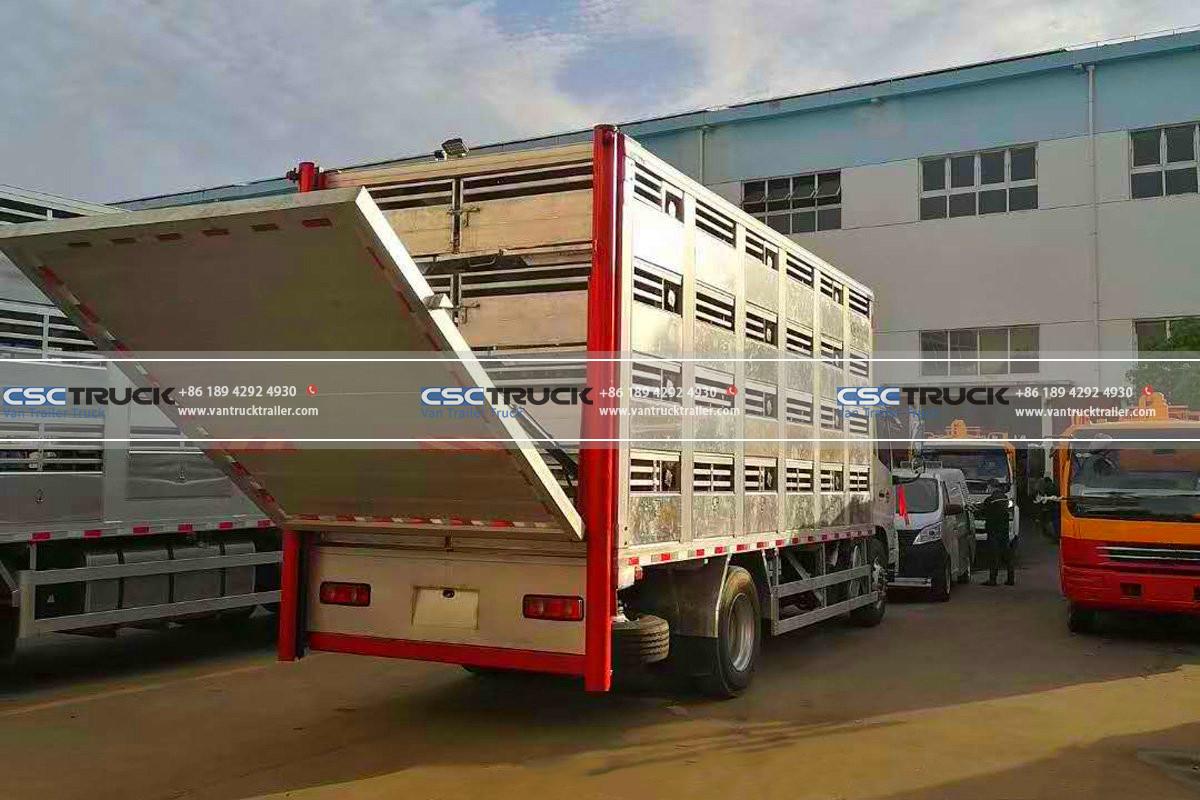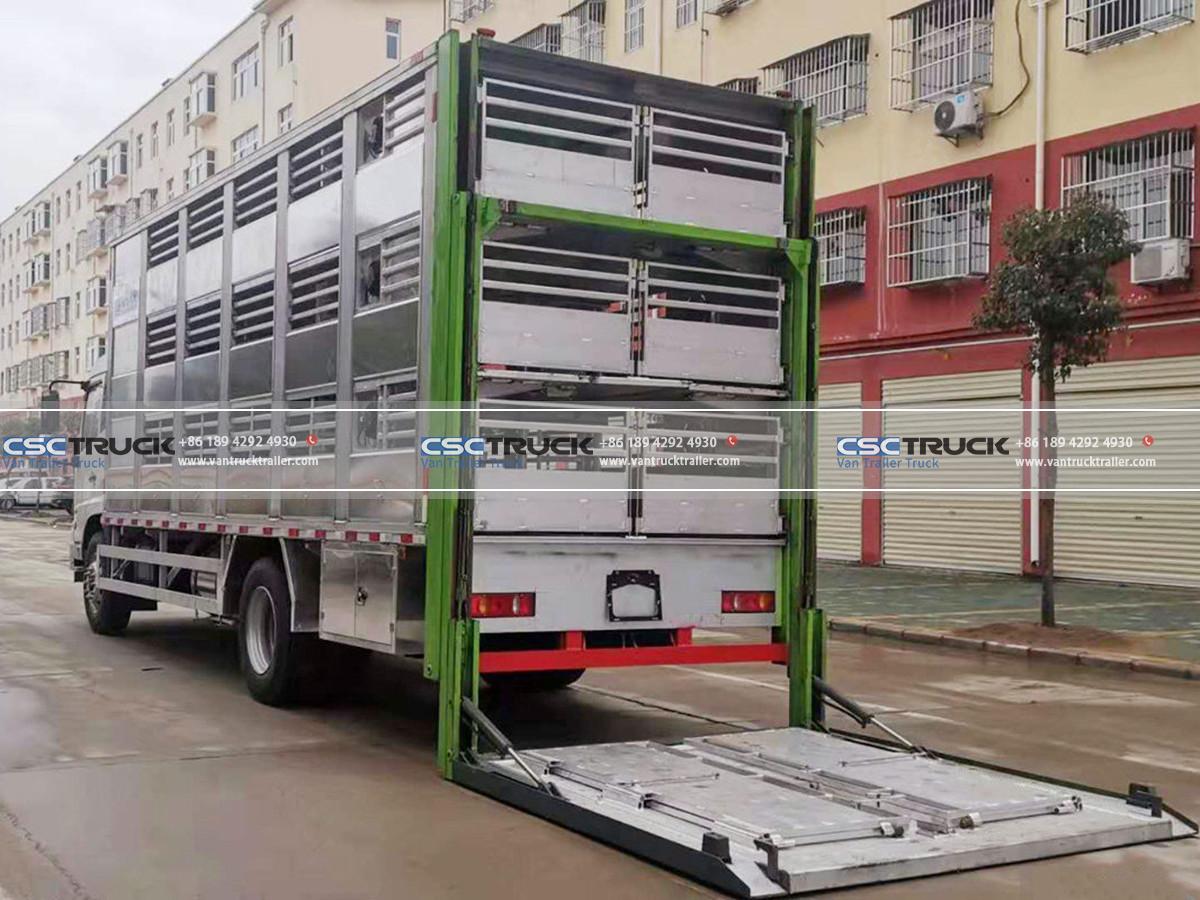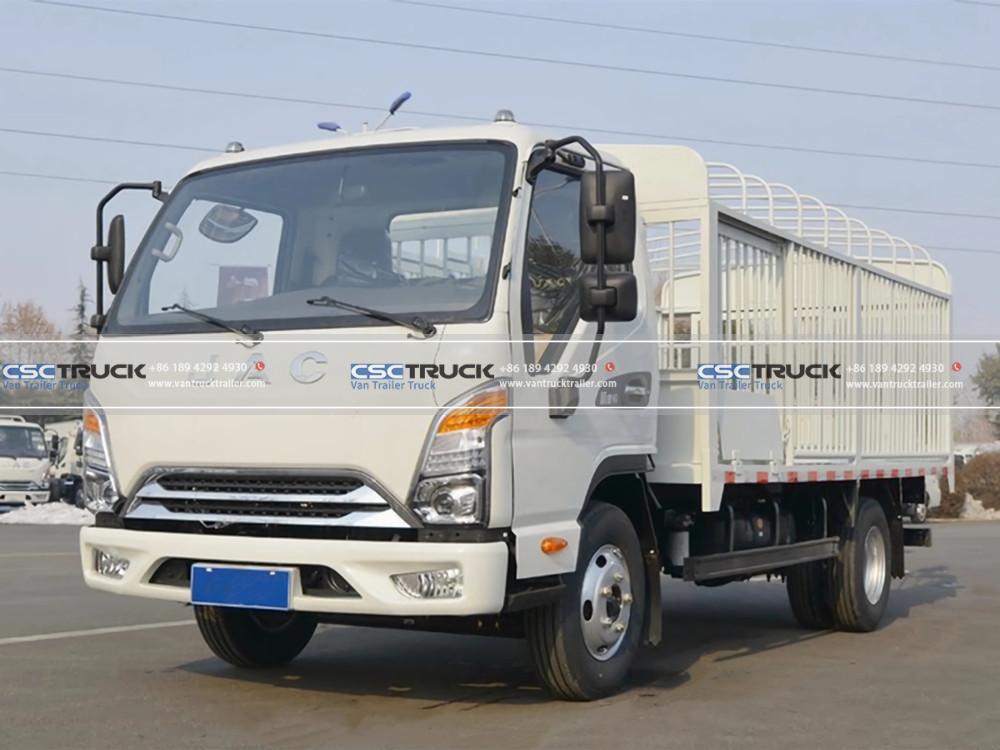Transporting livestock is a vital part of the agricultural and farming industries, facilitating the movement of animals from farms to markets, processing plants, and other locations. However, the process of safely transporting animals is not a simple task. It requires specialized vehicles that ensure the comfort, safety, and well-being of the animals throughout the journey. A livestock truck is designed specifically for this purpose, offering features that help minimize stress and ensure that animals arrive at their destination in good condition. Understanding the key features of a livestock truck can make a significant difference in maintaining the health of the animals and ensuring regulatory compliance.
In this article, we will explore the best features of a livestock truck for transporting animals, focusing on safety, comfort, ventilation, accessibility, and additional truck variants such as cargo trucks and refrigerator trucks, which can complement the needs of the livestock transportation process.
Safety Features for Animals on Livestock Trucks
The safety of the animals being transported is the top priority when using a livestock truck. These vehicles are designed with various features to prevent accidents, injuries, and undue stress to the animals during transit.
Secure Restraint Systems
One of the most essential features of a livestock truck is the system used to secure the animals in place. During transportation, livestock can move around, potentially causing injury to themselves or damaging the interior of the truck. To address this, livestock trucks are equipped with adjustable partitions, gates, and dividers that help contain the animals safely within designated sections of the truck. These systems are designed to prevent overcrowding, minimize the risk of falls, and ensure that each animal has enough space to stand comfortably.
In addition to these physical barriers, many livestock trucks include harnesses or restraint systems that help prevent the animals from becoming too agitated or unbalanced. The use of non-slip floors further contributes to safety, reducing the likelihood of animals slipping and getting injured during transit. These safety measures are crucial for long-distance journeys and for transporting larger animals like cattle, which may require more secure arrangements to ensure their safety.

Preventing Accidents and Instilling Comfort
The design of a livestock truck also includes features aimed at reducing the risk of accidents. For example, the truck’s loading ramp and the method of animal entry are designed to minimize the stress on the animals. The ramps are often fitted with non-slip surfaces, ensuring that animals can enter and exit safely, even in inclement weather conditions.
Additionally, the structural design of livestock trucks often includes reinforced exteriors and sturdy body frames to withstand the challenges of transporting large animals. These features not only enhance safety but also provide durability for frequent use in transporting livestock over long distances.
Comfort and Well-Being of Livestock During Transport
Beyond safety, the comfort of the animals is another critical consideration in livestock truck design. Animals can experience significant stress during long journeys, which can affect their health and well-being. To address this, livestock trucks incorporate several comfort-focused features aimed at reducing stress and ensuring that animals are transported in the most humane way possible.
Ventilation and Climate Control
Proper ventilation is a key feature of any livestock truck. Livestock, especially cattle, sheep, and pigs, can generate a lot of heat, which can quickly lead to an uncomfortable and potentially dangerous environment if the air inside the truck is not properly circulated. Livestock trucks are designed with ventilation systems that allow for the free flow of fresh air, helping to regulate the internal temperature and reduce humidity. These systems often include adjustable vents and windows, which allow for the customization of airflow depending on the type of animals being transported and the external weather conditions.
In addition to ventilation, some livestock trucks are equipped with climate control systems that can regulate the temperature inside the vehicle. This is especially important for transporting animals in extreme weather conditions, such as in the hot summer months or during cold winters. Proper temperature regulation ensures that the animals remain comfortable throughout the journey, helping to prevent heat stress or hypothermia.
Spacious Interior Design
The interior layout of a livestock truck is designed with the comfort of the animals in mind. Ample space is provided to allow animals to stand, lie down, or turn around, minimizing the risk of injury and reducing stress. Overcrowding is a major issue in animal transport, so the truck is usually divided into compartments of appropriate sizes, depending on the type of livestock being transported. By creating an environment that mimics the animals’ natural habitat as much as possible, livestock trucks help reduce anxiety and prevent physical harm during the journey.
Accessibility and Loading Features for Livestock Trucks
Efficient loading and unloading are essential for ensuring the safety and comfort of both the animals and the handlers. Livestock trucks are designed with specialized features to make this process easier, safer, and more efficient.

Low Loading Ramps
One of the key features of a livestock truck is the loading ramp, which provides a gentle incline for animals to enter and exit the vehicle. A low-angle ramp ensures that animals, particularly those that are less mobile, can move onto the truck without the risk of injury. These ramps are often equipped with non-slip surfaces, ensuring that animals have a secure footing when loading and unloading.
The loading system of a livestock truck is also designed for efficiency, allowing for quick and safe movement of animals in and out of the vehicle. Some trucks include hydraulic lifting systems, which help to adjust the height of the ramp to match the loading dock or ground level, providing a smooth transition for the animals.
Multiple Entry Points
To accommodate various types of livestock and different loading conditions, livestock trucks often have multiple entry points. These can include side doors, rear doors, and ramps, depending on the configuration of the truck. Multiple entry points allow for greater flexibility when loading and unloading, particularly when transporting different kinds of livestock or when working in areas with limited space.
The Role of Cargo Trucks in Livestock Transport
While livestock trucks are specifically designed for animal transport, they often work in conjunction with other types of vehicles, such as cargo trucks, to ensure the smooth flow of operations.
Cargo Trucks for Supporting Livestock Transport
Cargo trucks can assist in the transport of additional materials and equipment needed for the care of livestock during transit. These trucks are often used to carry feed, water, and bedding materials that ensure the animals’ comfort and well-being while on the road. Cargo trucks may also transport veterinary supplies, which are crucial for ensuring the health of the animals during long journeys.
In some cases, cargo trucks work alongside livestock trucks to provide logistical support, especially for large-scale transport operations. For example, when transporting livestock over long distances, cargo trucks may deliver necessary supplies to support the animals, while livestock trucks focus on the animals themselves.
Refrigerated Trucks for Transporting Livestock Products
In addition to livestock trucks, another important variant of transport vehicles is the refrigerator truck. While these trucks are primarily used for transporting perishable goods, they can also play a role in the livestock transportation process, particularly when dealing with processed meat or dairy products.
The Importance of Refrigerated Transport
For the transportation of perishable livestock products, such as meat and milk, refrigerator trucks provide the necessary temperature control to preserve freshness and prevent spoilage. These trucks are equipped with powerful cooling systems that maintain a constant temperature, ensuring that products stay fresh throughout the journey. The integration of refrigerator trucks into the livestock transport chain is critical for meeting food safety standards and maintaining product quality.
The livestock truck is a vital tool for transporting animals safely and efficiently. With its emphasis on safety features, comfort, accessibility, and temperature regulation, it ensures that animals are transported in a humane and secure manner. When combined with other vehicles such as cargo trucks for logistical support and refrigerator trucks for perishable products, it creates a comprehensive system for the transportation of livestock and related products. Understanding the key features of these trucks can help ensure the safe and efficient movement of animals, ultimately supporting the success of the agricultural and farming industries.

